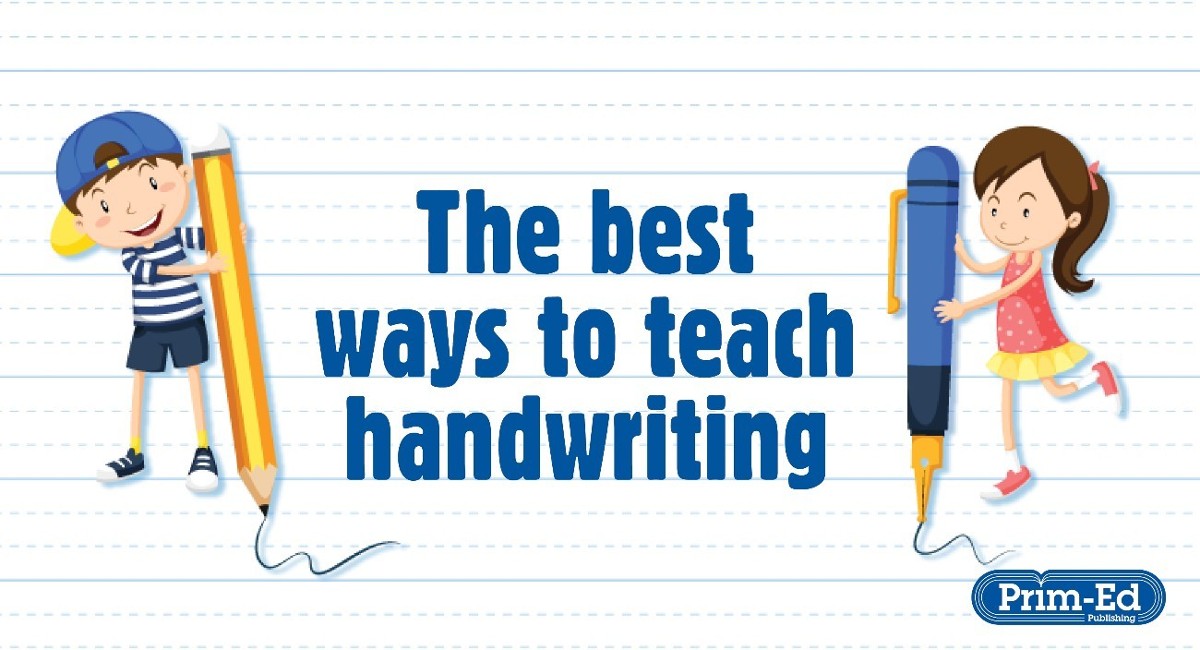- Tuesday 17 March 2020
Though the future looks like we’ll all be communicating with our fingers on keyboards, and with our voices, the skill of handwriting is still incredibly important and isn’t going anywhere anytime soon. Some pupils will naturally find using a keyboard an easier tool, but handwriting utilises parts of the brain a keyboard can’t, and, at least for the foreseeable future, pupils will still have to take tests with pen and paper.
So, what is the best way to set up our pupils for success?
How to teach handwriting
The core of teaching handwriting is practice. Nothing can replace the benefits of regular handwriting practice, and workbooks and worksheets are useful both in-class as homework. Start your pupils off with the basics, such as learning the form of letters using lined pages to help them get the proportions of the letters right.
You don’t have to use specialist lined sheets if you don’t have them (though they may be helpful), but instead use lined paper to show your pupils how to use the lines to guide their letters. Emphasise the importance of direction to help them get to grips with the proper way to form each letter.
Start by teaching the individual letters and graduate to teaching cursive handwriting. Use fun activities and displays to make the learning process interactive to keep students engaged and bolster their confidence as they succeed.
Resources and creative activities
Fortunately, teaching handwriting doesn’t have to mean you have to sit pupils down and ask them to repeat line after line of every letter until they get it right.
Nowadays, there are far better ways to teach your pupils that won’t send them to sleep, and plenty of handwriting resources you can utilise in the classroom. Tailor your handwriting resources so that pupils who find handwriting easy can test themselves, and those having difficulty receive the extra support they need. Examples of great resources are:
- Pencil grips – to help children learn the right way to hold their pencil
- Fine motor skills activities – fun ways to improve hand grip and control
- Alphabet wall posters in the correct font – display at all times so pupils keep correct lettering at the forefront of their minds
- Craft activities – ask pupils to draw, paint or make their own learning resources, such as posters; word spacers; head, body and tail or dirt, grass and sky pop sticks.
- Workbooks and worksheets – featuring themes to help them stay engaged.
Repetition is key, so using a range of different methods and different workbooks and sheets are ideal. New Wave Handwriting great range of books for all years that help your pupils go from beginners to accomplished writers.
Creative ways to teach handwriting
There are plenty of ways to bring more creativity to your lessons and even get outside with your pupils. Some ways you can consider teaching handwriting are:
- Sand writing
- Whiteboards (interactive and plain)
- Painting and posters
- Handwriting drills
- Fine motor exercises (such as games using tweezers/tongs like ‘Operation’)
- Apps and handwriting games on tablets
If you have access to them, interactive whiteboards and tablets can be a great way to bring the class together for group learning and interactive experiences (using their fingers or a stylus to practise writing), especially when teaching handwriting to older pupils.
So, what is the best way to teach handwriting?
The best way to teach handwriting will be different for each teacher and their pupils, but by using the basics of learning how to write (such as copying and tracing letters and learning their directions) as a foundation is the best approach. You can then build on that base with your own personal preferences and the preferences of your school.
Consider the needs of your pupils as you decide the best way to teach handwriting, as you know them best: how quickly they pick up new skills, the kinds of activities that keep their attention, and how much guidance they’ll need directly from you. Teaching handwriting to junior or senior infant classes will be different to the way you teach it to older pupils, though many of the techniques we’ve discussed are applicable to both.
Your school may also have its own approach to the way handwriting is taught, so you may have to work within those guidelines, as well as any timetable constraints and resource availability.
Universally, the best way to teach handwriting regardless of age will be to balance pencil-to-paper practice with fun interactive and craft activities that make the most of the resources you have available to you.
